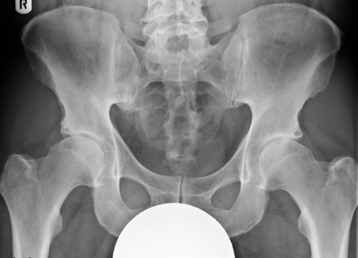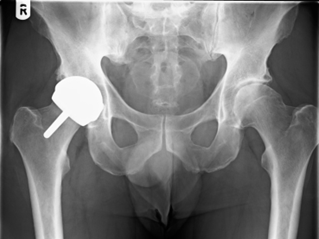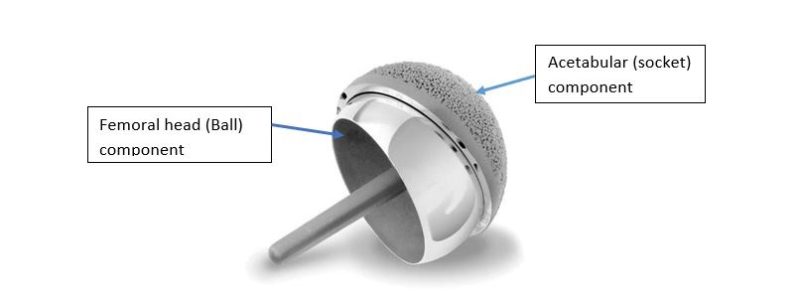Resurfacing Hip Replacement
What is resurfacing hip replacement?
Resurfacing hip replacement is a type of hip replacement undertaken to treat hip osteoarthritis but this is not a partial hip replacement. In this procedure both ball (femoral head) and socket (acetabulum) articular surfaces are replaced. The socket (acetabulum) is prepared, and a metal shell is seated in. This is a similar procedure to total hip replacement. The femoral head (ball) is removed in the total hip replacement. Whereas in a resurfacing hip replacement the femoral head is trimmed and prepared to take a metal cap on the top of it which importantly preserves bone on the femoral side. The metal cap articulates within the metal shell mimicking the appearance of a normal hip joint.



What are the advantages of resurfacing hip replacement?
Joint registry and studies have shown good results similar to those of total hip replacement in men under the age of 60.
It is bone preserving on the femur side as can be seen on the x-ray picture below. On the acetabular side it is very similar to total hip replacement. If this needs to be revised, then it is an easier revision on the femoral side but not necessarily on the acetabular side.

Dislocation rate is significantly lower compared to total hip replacement because of the larger size bearing surfaces.
Leg length discrepancy is also extremely low or negligible compared to total hip replacement.
Some articles suggest that patients returning to competitive sports enjoy greater mobility compared to those who had total hip replacement, however, these are not statistically significant.
The recovery time for resurfacing hip replacement is similar to that of total hip replacement.
What are the disadvantages of resurfacing hip replacement?
The bearing surfaces on both hip components are made of Cobalt Chromium alloy. The metal ion debris from these bearing surfaces can create local soft tissue and bone damage. Adverse reactions to the metal debris can be metallosis (staining of tissues around the hip joint due to metal particles), large reactive effusion (fluid collection in the joint) or ALVAL (Aseptic Lymphocyte-dominant Vascular Associated Lesion). ALVAL is due to damage to the soft tissues which can sometimes form soft tissue swelling, called pseudotumor, and damage to the bone around the prostheses with loss of blood supply. These conditions need to be identified early to consider revision and so these patients need to be followed up as per MHRA guidelines to identify any failures followed by intervention if necessary.
Other complications are similar to those associated with total hip replacement except the chances of dislocation and leg length discrepancy are very low compared to total hip replacement, as mentioned above.
Am I eligible for resurfacing total hip replacement?
The current guideline is to consider resurfacing hip replacement in men under the age of 60 with satisfactory hip joint anatomy. Older men might have a higher chance of fracture and so this procedure is better avoided. It is not considered suitable for women because of the higher incidence of failure due to adverse reaction to metal debris.
Careful assessment and thorough discussions need to take place before considering resurfacing hip replacement.
New hip prostheses, with ceramic-bearing surfaces, are currently in the experimental stage. Since the bearing surfaces are ceramic, the adverse reaction to metal debris should not occur. They are expected to be released for routine use in 2024. Only early results are available and, so far, are good. The results will be very closely monitored to confirm they remain successful and have low complication rates even in the long term.
